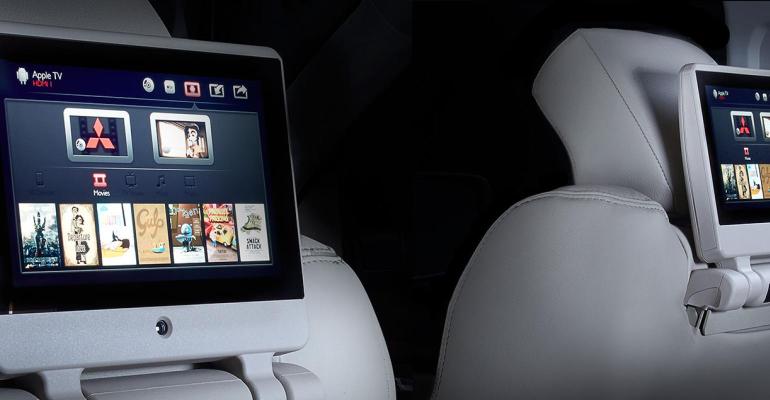FARMINGTON HILLS, MI – Squeezing new technology and features into the limited space available in the modern passenger vehicle is an art form all its own.
Mitsubishi Electric Automotive, with help from TomTom, the Dutch maker of electronic mapping solutions, has developed a cockpit that incorporates the latest developments from both companies such as simplified controls, more precise maps and driving instructions and more effective voice recognition. It also makes it easier for manufacturers to add new features.
“Technology is changing,” says Rebecca Lindland, senior director of industry data and insights at Cars Commerce, a car-purchasing and -selling platform. “But consumers are expecting a lot for their buck.”
Grygorii Maistrenko of Mitsubishi Electric Automotive says the company’s FLEXConnect dashboard comes with virtual sensing powered by BlackBerry in an in-cabin system with an edge-to-cloud vehicle data platform.
The collaboration will help advance road safety by utilizing sensor data to anticipate safety risks, reduce driver distractions, highlight potential driving hazards and enable new consumer experiences.
Drivers want to get in and go, bringing their digital lives along for the ride, according to Maistrenko. “You want to create personalized, protected in-vehicle experiences across brands, car models and trim levels without recreating the wheel every time,” he says. “The bridge to both is a digital cockpit platform that balances a predictable way of working with the freedom to customize.”
Maistrenko explains the system within FLEXConnect can watch for driver distractions and track a motorist’s concentration levels by detecting signs of drowsiness, estimating cognitive load, monitoring interaction with the infotainment system and even check on the driver’s mood if they are getting frustrated.
The thermal camera can track biometric information to provide insight into short- and long-term changes to a driver’s physical status, triggering autonomous pullovers and alerts to emergency services if necessary, Maistrenko says.
FLEXConnect analyzes facial features to create personalized identification profiles for automated verification to enable vehicle access and in-car payments. It can correlate user preferences with environmental information, such as suggesting optimal parking locations based on preferences for cost, distance from destination, parking format and availability.
Mitsubishi says the system is also a step toward the autonomous car, which requires hundreds of sophisticated technologies working together.
To help make this a reality, Mitsubishi created the necessary components for the car to sense its surroundings such as millimeter-wave radars and high-definition location modules. It can fuse this real-time sensor data to feed AI-based algorithms that recognize objects, evaluate conditions and provide judgments.
FLEXConnect also incorporates a high-definition mapping system developed by TomTom.
The system offers AI-powered navigation data required for automated driving. It also delivers up-to-the-minute mapping and traffic information to the motorist tucked behind the wheel as they navigate their vehicles through crowded cities, according to TomTom’s Morgan Dellowe, who notes TomTom has collected data on how long it takes to move around crowded cities all over the world.
The system is powered by a gaming engine and its built-in artificial intelligence focuses on the vehicle’s location, making it easier to guide to the best route, Dellowe says.
TomTom representatives note collaboration is the guiding principle behind the success of the company’s OpenStreetMap (OSM). This fundamental concept allows OSM’s communities to simultaneously use and make maps, they add.
The mapping system also comes with an advanced voice recognition system that responds quickly and makes it easier to use.
Mitsubishi Electric Automotive America, a U.S. affiliate of Japan’s Mitsubishi Electric Corp., traces its roots back to 1979 when a sales and service office was established to serve the North American automotive business.





